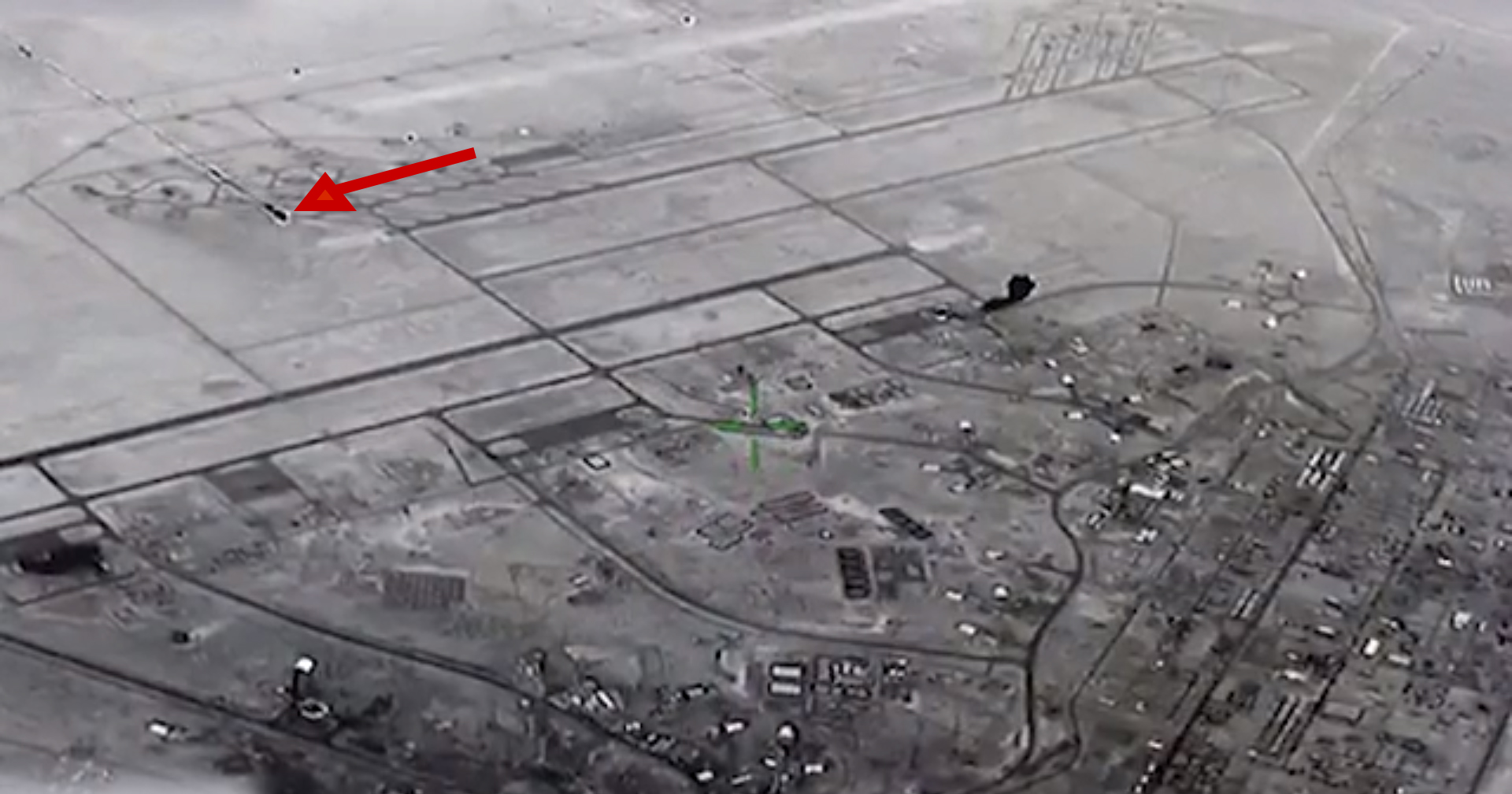

The Defense Department has released unclassified video of Iran’s ballistic missile attack on U.S. troops in Iraq last year that brought both countries to the brink of war.
On Jan. 3, 2020, a U.S. airstrike near Baghdad International Airport killed Iranian Maj. Gen. Qasem Soleimani, head of the Islamic Revolutionary Guard Corps’s elite Quds Force, and Abu Mahdi al-Muhandis, the commander of Kata’ib Hezbollah, an Iranian proxy force in Iraq that has attacked U.S. service members.
Five days later, Iran launched 16 short-range ballistic missiles at Iraqi bases that host U.S. troops. Eleven of those missiles struck Al Asad Air Base, where 110 U.S. troops were later diagnosed with mild Traumatic Brain Injury but none were killed. Twenty-nine soldiers were awarded Purple Heart medals for their injuries.
First aired during Sunday’s episode of “60 Minutes” on CBS, the footage released by U.S. Central Command shows five of the ballistic missiles striking Al Asad. The video of the large explosions reinforces the harrowing testimonials of airmen who lived through the missile attack, which were posted online in April by U.S. Air Forces Central Command.
Video: Pentagon footage shows Iranian ballistic missile attack on US troops in Iraq
Here’s how Senior Master Sgt. Noal Yarnes described what the impact of the first missile felt like:
“The bass resonating through the floor and walls of the bunker was met by muffled vocalizations I can’t quite quantify as screams,” said Yarnes, of the 443rd Air Expeditionary Squadron. “The sound was more guttural, as if pushed from inside the human body by an involuntary spasm of clenched muscles.”
Staff Sgt. Brian Sermons, of the 22nd Expeditionary Weather Squadron, described the first explosion as “soul-shaking.”
“Three more missiles hit – one within 150 meters of our bunkers,” Sermons said. “We could hear a shower of debris raining over the bunkers, smoke and dust filling the air inside. Aside from our shaky breathing, an eerie silence followed, then we heard rounds of ammo cooking off.”
And one anonymous airman said he clutched his M-4 carbine as missiles landed all around him. When a tent caught fire, the ammunition stored inside it began to explode.
Expecting that he would be killed at any moment, the airmen thought about his daughters.
“They love for me to sing ‘You are my sunshine,’ so I started singing quietly to myself and I waited for that final moment,” the airman said. “I had fully accepted that I would die in that shelter with my team.”
No U.S. troops were killed in the ballistic missile attack, in part because the U.S. government received advance warning about the impending missile strikes, allowing many service members to be evacuated from Al Asad ahead of time.
Lt. Col. Staci Coleman, commander of the 443rd Air Expeditionary Squadron, later talked about what it was like deciding which of her troops would be evacuated and which had to stay behind.
“I was being forced to gamble with my members’ lives by something I couldn’t control,” Coleman said. “I was deciding who would live and would die. I honestly thought anyone remaining behind would perish. I didn’t believe anyone would survive a ballistic missile attack and it made me feel sick and helpless.”
Three CV-22 Osprey aviators were ultimately recognized for flying 194 special operators to safety before and during the missile attack. Tech. Sgt. Samuel T. Levander and Lt. Col. Adam C. Darrow were awarded the Distinguished Flying Cross and Lt. Col. Adam C. Leachman received the Bronze Star.
The fact that no U.S. service members were killed in the attack initially led to speculation that the Iranians had aimed their ballistic missiles in order to avoid hitting barracks and other structures housing U.S. troops.
But Army Gen. Mark Milley, chairman of the Joint Chiefs of Staff, told reporters immediately following the attack that he felt the Iranians had indeed tried to kill U.S. troops.
“The points of impact were close enough to personnel and equipment and so on and so forth, I believe based on what I saw and what I knew that they were attempting to cause structural damage; destroy vehicles and equipment and aircraft; and to kill personnel,” Milley said.
Featured image: U.S. Soldiers stand at a site of Iranian bombing at Ain al-Asad air base in Anbar, Iraq, Monday, Jan. 13, 2020. (AP Photo/Qassim Abdul-Zahra)
Related: A looming conflict with Iran shows Congress needs to care about declaring war again